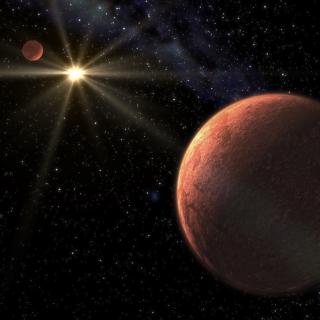Bibcode
Bauer, F. F.; Zechmeister, M.; Kaminski, A.; Rodríguez López, C.; Caballero, J. A.; Azzaro, M.; Stahl, O.; Kossakowski, D.; Quirrenbach, A.; Becerril Jarque, S.; Rodríguez, E.; Amado, P. J.; Seifert, W.; Reiners, A.; Schäfer, S.; Ribas, I.; Béjar, V. J. S.; Cortés-Contreras, M.; Dreizler, S.; Hatzes, A.; Henning, T.; Jeffers, S. V.; Kürster, M.; Lafarga, M.; Montes, D.; Morales, J. C.; Schmitt, J. H. M. M.; Schweitzer, A.; Solano, E.
Bibliographical reference
Astronomy and Astrophysics
Advertised on:
8
2020
Journal
Citations
51
Refereed citations
47
Description
The high-resolution, dual channel, visible and near-infrared spectrograph CARMENES offers exciting opportunities for stellar and exoplanetary research on M dwarfs. In this work we address the challenge of reaching the highest radial velocity precision possible with a complex, actively cooled, cryogenic instrument, such as the near-infrared channel. We describe the performance of the instrument and the work flow used to derive precise Doppler measurements from the spectra. The capability of both CARMENES channels to detect small exoplanets is demonstrated with the example of the nearby M5.0 V star CD Cet (GJ 1057), around which we announce a super-Earth (4.0 ± 0.4 M⊕) companion on a 2.29 d orbit.
Based on observations collected at the Centro Astronómico Hispano Alemán (CAHA) at Calar Alto, Almería, Spain, operated jointly by the Junta de Andalucía and the Instituto de Astrofísica de Andalucía (CSIC).
Based on observations collected at the European Southern Observatory, Paranal, Chile, under program 0103.C-0152(A), and La Silla, Chile, under programs 072.C-0488(E) and 183.C-0437(A).
Related projects

Very Low Mass Stars, Brown Dwarfs and Planets
Our goal is to study the processes that lead to the formation of low mass stars, brown dwarfs and planets and to characterize the physical properties of these objects in various evolutionary stages. Low mass stars and brown dwarfs are likely the most numerous type of objects in our Galaxy but due to their low intrinsic luminosity they are not so
Rafael
Rebolo López

Exoplanets and Astrobiology
The search for life in the universe has been driven by recent discoveries of planets around other stars (known as exoplanets), becoming one of the most active fields in modern astrophysics. The growing number of new exoplanets discovered in recent years and the recent advance on the study of their atmospheres are not only providing new valuable
Enric
Pallé Bago